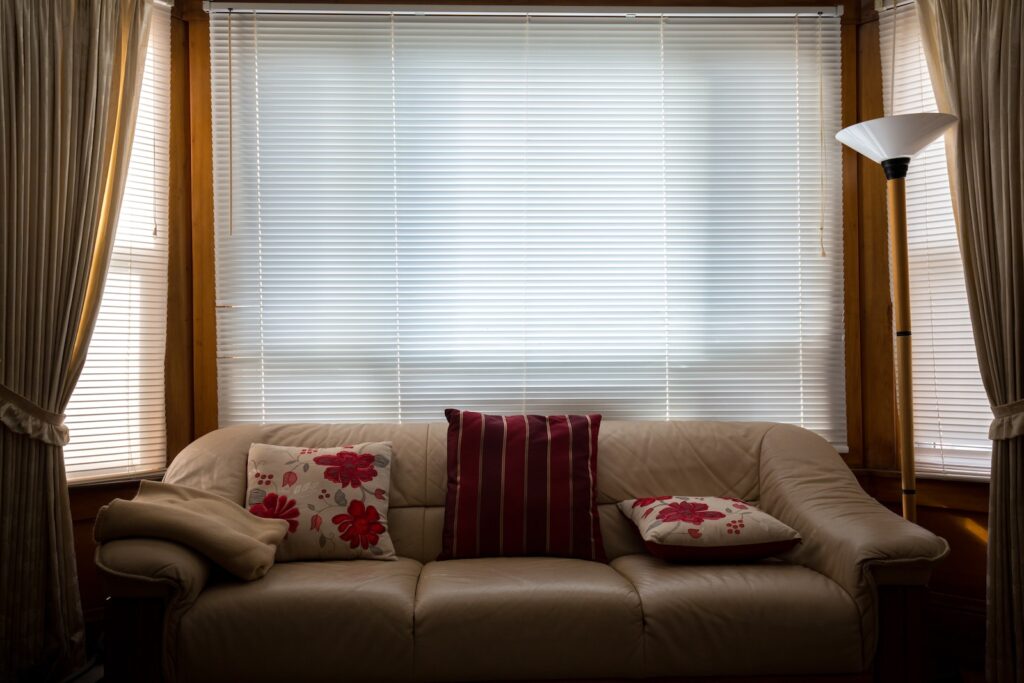Are you tired of purchasing blinds that are always too short for your windows? Do you find yourself constantly adjusting them to cover the entire window, only to have them fall short? Well, fear not! We’re here to answer the burning question: Can blinds be longer than the window?
The answer is simple, yet surprising. Yes, blinds can be longer than the window, and it’s actually becoming a popular trend in interior design. In this article, we’ll explore why longer blinds are making a comeback, the benefits they offer, and how you can incorporate them into your home décor. So, let’s dive in!

Can Blinds Be Longer Than Window?
If you are considering buying new blinds for your windows, you may be wondering if it is possible to install blinds that are longer than your window. The short answer is yes, you can install blinds that are longer than your window. However, there are some important things to consider before making your purchase.
Measurements Matter
The first thing to consider when installing blinds that are longer than your window is the measurements. You will need to measure the width and height of your window accurately. If you are unsure of how to do this, it is recommended that you seek the help of a professional. Once you have the measurements, you will need to choose blinds that are the appropriate size.
There are several types of blinds that can be installed outside the window frame, including roller shades, cellular shades, and vertical blinds. These blinds can be cut to the appropriate size, making them an excellent choice for windows of all shapes and sizes.
Benefits of Installing Blinds That Are Longer Than Your Window
There are several benefits to installing blinds that are longer than your window. First, it can help to block out more light and provide additional privacy. This is especially important in rooms where you need complete darkness, such as bedrooms or media rooms.
Second, it can help to make your windows look larger. By extending the blinds beyond the window frame, you can create the illusion of a larger window and make your room feel more spacious.
Vertical Blinds
Vertical blinds are an excellent choice for windows that are longer than standard sizes. They are easy to install and can be cut to fit any window size. Vertical blinds come in a variety of materials, including vinyl, fabric, and wood, making them a versatile option for any decor.
There are several benefits to installing vertical blinds, including their ability to provide privacy and light control. They are also easy to clean and maintain, making them a popular choice for busy households.
Roller Shades
Roller shades are another excellent option for windows that are longer than standard sizes. They are easy to install and can be cut to the appropriate size. Roller shades come in a variety of materials, including fabric, vinyl, and solar shades.
There are several benefits to installing roller shades, including their ability to provide excellent light control and privacy. They are also easy to operate and come in a variety of colors and patterns, making them a versatile option for any decor.
Cellular Shades
Cellular shades are an excellent option for windows that are longer than standard sizes. They are easy to install and can be cut to fit any window size. Cellular shades come in a variety of materials, including fabric and vinyl.
There are several benefits to installing cellular shades, including their ability to provide excellent insulation and energy efficiency. They are also easy to operate and come in a variety of colors and patterns, making them a popular choice for any decor.
Blinds vs. Curtains
When it comes to dressing your windows, you have two main options: blinds or curtains. While both options have their advantages and disadvantages, blinds are often a better choice for windows that are longer than standard sizes.
Blinds are more versatile than curtains, as they can be cut to fit any window size. They also provide better light control and privacy, making them an excellent choice for bedrooms and media rooms.
Conclusion
In conclusion, installing blinds that are longer than your window is possible. However, it is important to measure your windows accurately and choose blinds that are the appropriate size. There are several types of blinds that can be installed outside the window frame, including roller shades, cellular shades, and vertical blinds. Each type has its advantages and disadvantages, so it is recommended that you choose the one that best suits your needs.
Frequently Asked Questions
Here are some commonly asked questions about blinds and window treatments.
1. What is the standard length of blinds?
Blinds typically come in standard sizes, but can also be custom-made to fit specific window dimensions. The length of blinds should be the same as the height of the window or slightly shorter. This ensures that the blinds do not touch the floor or obstruct the window sill.
However, if you have high ceilings or want to create a dramatic effect, longer blinds can be used. Just make sure they are not too long and do not pose a safety hazard.
2. Can I use longer blinds for privacy?
Yes, longer blinds can provide more privacy than shorter ones. They can cover more of the window and prevent people from seeing inside your home. However, be aware that longer blinds can also block more light and may be harder to clean and maintain.
If privacy is a top concern, you may want to consider adding curtains or drapes over the blinds for extra coverage.
3. How do I measure for longer blinds?
To measure for longer blinds, first determine the desired length by measuring the height of the window or the distance from the top of the window frame to the floor. Then, add a few inches to allow for clearance and mounting hardware.
When ordering custom blinds, provide the manufacturer with the exact measurements to ensure a perfect fit. If you are unsure, consult with a professional or refer to online measuring guides.
4. Are longer blinds more expensive?
Longer blinds may be slightly more expensive than standard-sized ones, especially if they are custom-made. However, the cost difference is usually minimal and depends on factors such as the type of material, style, and brand.
If you are on a budget, consider purchasing standard-sized blinds and cutting them down to size yourself. Just be sure to follow the manufacturer’s instructions carefully and use the proper tools.
5. What are some alternatives to longer blinds?
If longer blinds are not practical or desirable, there are several alternatives to consider. These include:
- Curtains or drapes
- Shades
- Sheer panels
- Valances or cornices
Each of these options can add style and functionality to your windows while allowing you to control privacy and light.
Big Window Problems – Mutliple Blinds One Headrail with SelectBlinds.com
In conclusion, it is possible for blinds to be longer than the window they are fitted onto. While it may seem counterintuitive, having longer blinds can actually enhance the aesthetic appeal of your room. Not only do they provide maximum coverage and privacy, but they also create a sense of height and add depth to your windows.
When choosing longer blinds, it is important to consider the type of window you have and the overall style of your room. It is also crucial to take accurate measurements to ensure a perfect fit. With the right combination of design and practicality, longer blinds can be a stylish and functional addition to your home.
In the end, whether you opt for blinds that are longer or shorter than your window, the most important thing is to choose a style that suits your taste and meets your needs. With so many options available on the market, you can easily find the perfect blinds to transform your living space and make it truly your own.

